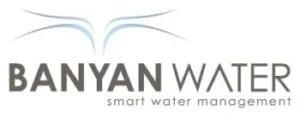LEED (Leadership in Energy and Environmental Design) is one of the more well-known green building certifications in the United States. A LEED-certified building meets stringent sustainability requirements in several different LEED categories. As expressed in the tagline, “Better buildings are our legacy,” the LEED program seeks to encourage sustainable practices in the way that buildings are planned, constructed, maintained and operated. LEED certification is overseen by the U.S. Green Building Council (USGBC).
LEED Goals
According to the USGBC, the high-level goals for any LEED project include:
 LEED Certification gives businesses multiple benefits
LEED Certification gives businesses multiple benefits
- Enhance Individual Human Health and Well-Being
- Protect and Restore Water Resources
- Protect, Enhance and Restore Biodiversity and Ecosystem Services
- Promote Sustainable and Regenerative Material Resources Cycles
- Reverse Contribution to Global Climate Change
- Build a Greener Economy
- Enhance Social Equity, Environmental Justice, and Community Quality of Life
Why you want a LEED-certified building or project?
Businesses and homeowners have different reasons for seeking LEED certification. A few of the popular reasons are:
Government Incentives – Some cities or states offer incentives for green building practices. For example, Fannie Mae offers lower interest rates to multifamily properties with a LEED certification
Long-Term Savings – More efficient buildings and homes reduce operating costs. Lower energy bills. Lower water bills. Long-term savings often offset the costs of initial investments.
Public Relations – The ability to report on positive environmental practices to the press or in annual reports can be very powerful for companies. Adobe, for example, has received positive press coverage for its LEED certifications in multiple buildings.
Sustainability – Many companies are making sustainability a core part of their business plan or long-term goals. A green building is a way to make progress towards those goals.
Real Estate Profitability – A business case study examining the San Diego real estate market showed that the overall vacancy rate for green buildings was four percent lower than for non-green properties—11.7 percent, compared to 15.7 percent. LEED-certified buildings also routinely commanded the highest rents. (USGBC, The Business Case for Green Building)
Happier Employees – LEED-certified buildings are often built with features that enhance the comfort of humans in the building, such as more open spaces, large windows and thoughtfully located sites. As study after study has shown, happy employees are more productive employees.
If these are reasons that make sense for your business, then it’s time to learn more about LEED certification.
In Nine Categories of LEED Points, we explore how the USGBC allocates LEED Credits for certification and the LEED categories in which points can be earned.

